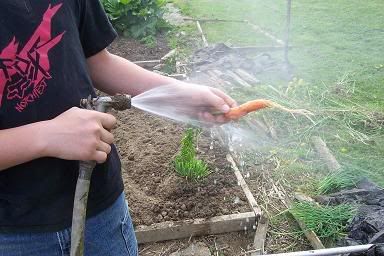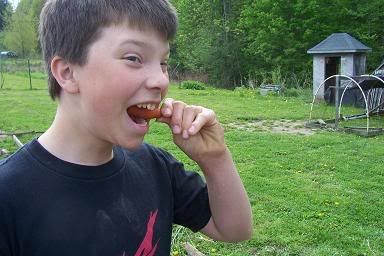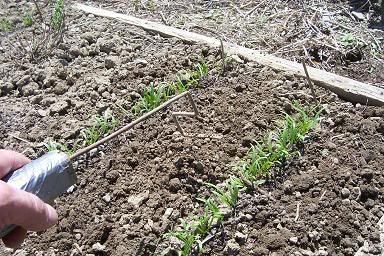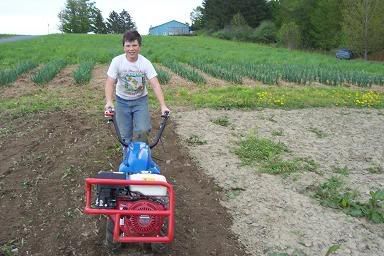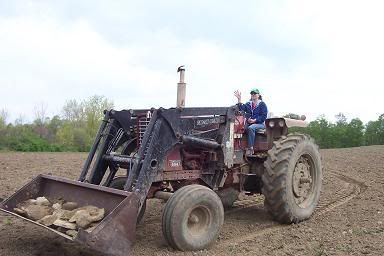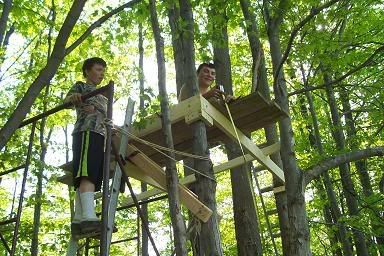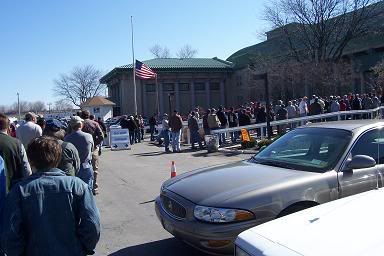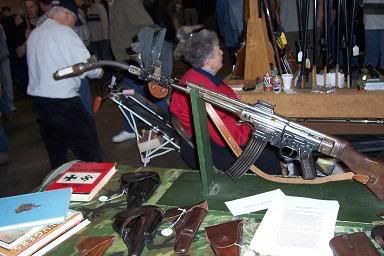I first learned about adrenal glands in sixth grade. Mr. Quirk was my teacher. Science was my favorite subject. We were learning about the human body. I was seriously thinking that I wanted to be a doctor when I grew up. My grandfather was a doctor. My father was a doctor. My stepfather was an insurance salesman. Being a doctor appealed to me more than being a door-to-door salesman.
All of that changed when I was half way through ninth grade. As I’ve mentioned here before, my family moved from our suburban tract house outside Syracuse, NY to an old farm house in New York’s beautiful Finger Lakes Region. I was in a different environment. A better environment. I started reading Mother Earth News magazine. I decided I’d rather be a farmer, like my mother’s father, Percy O. Philbrick—the man pictured with me on the cover of
this book.
Of course, I went to government school back then. Homeschooling was unheard of. The suburban high school I attended had a class size of several hundred. The rural school where I moved had a class size of less than 100.
I remember three things from my first day in the new rural school. My gym teacher, Mr. Derenberger showed an interest in me. He took time out to speak with me before class. He welcomed me to the school, and told me that if I ever had a question or problem to come see him. He was a genuinely nice man. Years later, I remodeled his kitchen (when I was in that business).
The second thing I remember about that first day in the new school was in gym class. I was standing against the wall, watching, and the biggest guy in the class sauntered over to me. Two guys were right behind him. I thought to myself that I was probably in for trouble. I had come from a school that was culturally Darwinian(survival of the fittest). Bullying and fighting were common. It was a rough place and I had no reason to expect anything different in this new school.
However, to my utter amazement, the big guy smiled, extended his hand to shake, and said, “Hi, I’m George. This is my friend Ben and this is Wayne.” There was no intimidation. These guys were friendly. Everyone seemed friendly. In the next three and a half years, I saw only one fight.
The third thing I remember about that day was walking into a room where a girl named Mary greeted me with a big friendly smile and a welcoming hello. This was one weird school.
Now you’re probably wondering what all this has to do with adrenal fatigue. It so happens that girl, Mary, is my wife Marlene’s best friend. She and her husband, Ken (another school mate), have been good friends of Marlene and I since high school days. That’s more than 30 years.
Mary went to college, got a degree in occupational therapy, and worked for awhile before leaving her well-paying job to be a full-time mother. Marlene did the same. And, like us, Mary and Ken have struggled along on one income ever since. Ken worked for many years in the building trades, just like I did. And Ken and Mary have homeschooled their four children, as we have done.
In recent years, Mary has become interested in natural health and she has become a N.D. (doctor of naturopathic medicine). If you wonder what exactly a naturopathic doctor does, you can find a decent explanation at
this link. Unlike many modern doctors who go into medicine primarily for the money, Mary has chosen to go into natural health out of a genuine desire to help people get better. I know this to be true because I know Mary.
Mary did some testing of me over a year ago and found that I’m in generally good health. But she told me my adrenals are stressed. The adrenal glands (there is one located on the top of each of your kidneys) serve numerous functions, one of which is to help your body deal with stress. So if your adrenals are stressed, then your body can’t deal with stress properly. As a result, you are chronically tired, prone to colds and flu, and the list goes on. You can find out more about adrenal fatigue symptoms at this link:
About Adrenal FatigueWhen Mary first told me about Adrenal Fatigue, I didn’t consider it much of a problem. But this last winter was difficult for me. I’ve had to deal with one virus after another. Each knocked me out of commission for a couple of days. I got over the sicknesses fairly fast. But then I got hammered again. It’s a bummer. One guy at work quips that I’m the sickest healthy person he knows. He likes to tell me that because I don’t eat junk food at work, but he does, and he doesn’t get sick.
I think most men who are faced with the job of providing for their family in the midst of our modern culture are under stress. I have an especially stressful non-agrarian job (which I once blogged about here). I can tell you that I deal with it better than many who I work with. But I guess you can’t fool your adrenal glands.
So what does one do to combat adrenal fatigue? Well, that’s what I’m researching now. There are books (I purchased one online today). There are diet routines (which I’ll be focusing on more). There are herbal and mineral supplements. Marlene bought me a colloidal mineral & Chinese herbal tonic to take. I’m hesitant to consume anything with a Chinese background these days, but the company that makes the product (Nature’s Sunshine) has a reputation for testing & purity.
For the past couple of weeks I have been taking a tablespoon of the herbal tonic morning and evening. It is vile tasting, so it must be good, right? I do think it is helping.
So there’s my story about Adrenal Fatigue. Does it sound familiar? If so, perhaps you should take a moment to do a Google search and learn more. Adrenal fatigue is a common malady.
If, perchance, you already know more, I’d appreciate learning what diet, or herbal/mineral supplements, have helped you.
One thing I know for sure, working in my garden is one of the most de-stressing (and, therefore, adrenal-strengthening) things I've ever done. So you can bet I'll be doing more of that.
